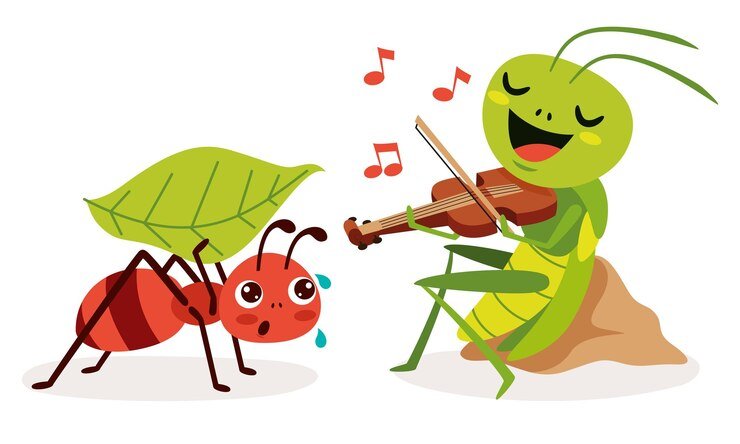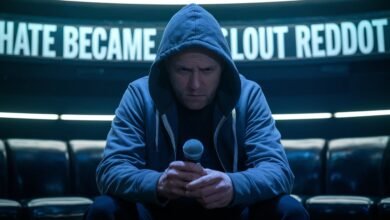Was Echolalia Used in The Ant Bully? Exploring Communication in the Animated Film

The Ant Bully (2006) is a beloved animated movie that tells the story of Lucas Nickle, a young boy who learns big lessons about teamwork and empathy after being shrunk down to ant size. With its colorful characters and heartfelt messages, the film has captured the hearts of kids and adults alike. But one question has sparked curiosity among fans and researchers: Was echolalia, a speech behavior often associated with autism or developmental conditions, used in The Ant Bully? In this article, we’ll dive into this topic, exploring what echolalia is, how it might relate to the movie’s characters or themes, and why this question matters. Whether you’re a fan of the film or curious about communication styles, this user-friendly guide will break it all down in simple terms.
What Is Echolalia? A Quick Overview
Before we jump into The Ant Bully, let’s clarify what echolalia is. Echolalia is when someone repeats words, phrases, or sounds they hear, either right away (immediate echolalia) or later (delayed echolalia). It’s a natural part of language development in young kids, but it’s also common in people with autism spectrum disorder (ASD), Tourette syndrome, or other neurological conditions. For example, if you ask a child, “Do you want a snack?” and they reply, “Want a snack?” that’s immediate echolalia. Or they might recite a line from a favorite movie hours later—that’s delayed echolalia.
Echolalia isn’t just random repetition. It can serve purposes like:
-
Communication: Repeating phrases to express needs or join a conversation.
-
Learning: Practicing language by mimicking sounds or words.
-
Self-soothing: Using familiar phrases to calm down or focus.
-
Scripting: Reciting lines from movies or shows to navigate social situations.
In movies, echolalia might show up in characters who repeat phrases to convey personality traits, emotions, or unique communication styles. So, could this behavior appear in The Ant Bully? Let’s explore the film’s characters and scenes to find out.
The Ant Bully: A Story of Connection and Communication
The Ant Bully, directed by John A. Davis, follows Lucas, a 10-year-old boy who’s bullied by bigger kids and takes out his frustration by destroying an ant colony. After the ants magically shrink him to their size, Lucas enters their world, learning about their teamwork, culture, and struggles. The movie features a mix of human and insect characters, each with distinct personalities and ways of communicating. Key characters include:
-
Lucas Nickle: The human protagonist who learns empathy and bravery.
-
Zoc: A wise ant wizard who initially distrusts Lucas but grows to respect him.
-
Hova: A kind ant who mentors Lucas and helps him adapt to ant life.
-
Beetle, Fly, and Glow Worm: Quirky insect sidekicks who add humor and support.
The film’s themes of understanding differences and building connections make it a great lens for exploring communication styles, including echolalia. But do any characters show signs of this behavior, or does the movie use echolalia to deepen its storytelling? Let’s analyze the evidence.
Searching for Echolalia in The Ant Bully
To answer whether echolalia was used in The Ant Bully, we need to look at the characters’ dialogue, behaviors, and the film’s creative choices. Since echolalia involves repeating words or phrases, we’ll focus on moments where repetition might reflect this behavior or serve a similar purpose.
1. Character Dialogue and Repetition
In animated films, repetition is often used for humor, emphasis, or to show a character’s personality. In The Ant Bully, the insect characters have unique speech patterns that reflect their quirky traits. For example:
-
Beetle and Glow Worm: These characters, voiced by Rob Paulsen and others, are comedic sidekicks who often banter or react to situations with short, catchy phrases. In one scene, Glow Worm says, “That looks vulnerable,” before Beetle bites the villain, Stan Beals, in a sensitive spot. This line isn’t repeated verbatim, but the characters’ playful, reactive dialogue could resemble echolalia-like patterns if they echoed each other’s words in a rhythmic way.
-
Fly: Fly is chatty and excitable, often blurting out quick remarks. While his dialogue is spontaneous, it doesn’t show clear signs of repeating others’ words or phrases in a way that matches echolalia.
However, none of these characters consistently repeat phrases in a way that aligns with clinical echolalia (immediate or delayed). Their dialogue feels more like comedic banter or scripted humor than a deliberate portrayal of this speech behavior. For instance, if Beetle had repeated “That looks vulnerable” multiple times in different scenes, it might suggest echolalia, but the movie doesn’t take this approach.
2. Lucas and Human Characters
Lucas, as the main character, navigates both human and ant worlds, adapting to new ways of communicating. In the human world, he’s quiet and withdrawn, struggling with bullies. In the ant world, he learns to “talk” like an ant, using teamwork and gestures. While Lucas doesn’t repeat phrases verbatim, his journey involves mimicking ant behaviors to fit in, which could loosely parallel how echolalia helps some people learn language or social cues.
Other human characters, like the bully Stan Beals or Lucas’s family, don’t show repetitive speech patterns either. Stan’s dialogue is menacing but straightforward, and Lucas’s family members speak in typical, conversational ways. There’s no evidence of echolalia in their interactions.
3. Ant Colony Communication
The ant colony in The Ant Bully operates like a tight-knit society, with collective chants and synchronized movements. For example, the ants rally together with rhythmic sounds or phrases during battles or celebrations. These group vocalizations might resemble echolalia on a surface level, as they involve repetition and mimicry. However, they’re more about unity and cultural expression than individual speech behaviors.
In real life, ants communicate through pheromones and physical signals, not verbal language. The movie anthropomorphizes them, giving them human-like speech for storytelling. If the ants had a character who repeatedly echoed Zoc or Hova’s words, it might suggest echolalia, but the film focuses on varied, purposeful dialogue instead.
4. Scripting and Pop Culture References
Echolalia sometimes involves scripting, where someone recites lines from movies, TV shows, or commercials. In The Ant Bully, there’s no clear instance of a character quoting external media in this way. The dialogue feels original to the film’s world, with no obvious references to real-world songs, ads, or shows. This makes it unlikely that delayed echolalia, tied to scripting, is a feature of the movie.
Why Echolalia Might Not Fit The Ant Bully’s Style
After analyzing the film, it seems The Ant Bully doesn’t explicitly use echolalia. Here’s why this speech behavior might not align with the movie’s goals or style:
-
Focus on Clarity: Animated films for kids prioritize clear, engaging dialogue to keep young viewers entertained. Echolalia, especially if portrayed realistically, might confuse audiences or slow the pacing. The movie opts for straightforward humor and heartfelt exchanges instead.
-
Character-Driven Storytelling: Each character in The Ant Bully has a distinct role (e.g., Zoc as the skeptic, Hova as the nurturer). Repetitive speech might overshadow their personalities or make them less relatable.
-
No Neurodiversity Themes: While the film celebrates differences through Lucas’s growth, it doesn’t directly explore neurodiversity or conditions like autism, where echolalia is common. The story focuses on universal themes like teamwork and empathy, not specific communication challenges.
That said, the absence of echolalia doesn’t mean the movie lacks depth in its portrayal of communication. The ants’ collective chants and Lucas’s adaptation to their world show how language and behavior can bridge gaps between different “species” or perspectives.
Could Echolalia Have Enhanced The Ant Bully?
Even if echolalia isn’t present in The Ant Bully, it’s worth considering how it could have added to the story. For example:
-
Character Development: A character with echolalia could highlight the theme of understanding differences. Imagine an ant who repeats Hova’s encouraging words (“You can do this, Lucas!”) to show loyalty or process emotions. This could deepen the film’s message about accepting others.
-
Humor and Heart: Echolalia could be used comedically, like Beetle echoing Glow Worm’s lines in a quirky duet, while also showing their bond. It could make the characters more memorable and relatable.
-
Representation: Including a character with echolalia could subtly introduce neurodiversity to young audiences, fostering empathy and awareness in an accessible way.
However, adding echolalia would require careful handling to avoid stereotypes or confusion. The filmmakers likely prioritized a streamlined story over niche communication traits, but the idea is intriguing for future animated projects.
Echolalia in Other Animated Films
To put The Ant Bully in context, let’s consider how echolalia appears in other animated movies. While not always labeled as echolalia, repetitive speech often shows up in characters with unique communication styles:
-
Dory in Finding Nemo (2003): Dory’s short-term memory loss leads her to repeat phrases like “Just keep swimming” or mimic others’ words. While not clinical echolalia, her repetition feels similar and serves both humor and emotional depth.
-
Lilo in Lilo & Stitch (2002): Lilo sometimes echoes phrases or uses quirky speech patterns, reflecting her unconventional personality. This could resonate with viewers who recognize echolalia-like behaviors.
-
Mater in Cars (2006): Mater’s fast-talking, repetitive catchphrases (“Dad gum!”) add humor and charm, though they’re more stylistic than echolalic.
These examples show how animated films use repetition to build character or advance the story. The Ant Bully doesn’t take this route, but its focus on communication still aligns with the broader trend of celebrating diverse ways of connecting.
Why This Question Matters
You might wonder why we’re even asking about echolalia in The Ant Bully. Here’s why this topic is worth exploring:
-
Representation in Media: As awareness of autism and neurodiversity grows, viewers are curious about how communication differences are portrayed in films. Echolalia, as a common trait in ASD, is a lens for examining inclusivity in storytelling.
-
Educational Value: Discussing echolalia in movies can spark conversations about language development and acceptance. Parents, educators, or kids watching The Ant Bully might learn something new by connecting it to real-world behaviors.
-
Fan Curiosity: Fans love diving into the details of their favorite films. Exploring niche questions like this adds a fresh perspective to The Ant Bully’s legacy.
Even if echolalia isn’t a feature of the movie, the question encourages us to think critically about how stories portray communication and connection.
Tips for Spotting Echolalia in Movies
If you’re watching The Ant Bully or other films and want to identify echolalia-like behaviors, here are some tips:
-
Listen for Repetition: Does a character repeat words or phrases right after hearing them (immediate echolalia) or later in a different context (delayed echolalia)?
-
Check the Purpose: Is the repetition used to communicate, self-soothe, or practice language? Echolalia often has a function beyond random mimicry.
-
Consider the Character: Does the character show traits associated with autism, developmental delays, or other conditions where echolalia is common?
-
Watch for Scripting: Does the character quote movies, songs, or ads in a way that feels out of place or purposeful?
Applying these tips to The Ant Bully shows that while repetition exists (e.g., in group chants), it doesn’t match the clinical or functional definition of echolalia.
Conclusion: No Echolalia, But Plenty of Heart
After exploring The Ant Bully’s characters, dialogue, and themes, it’s clear that echolalia isn’t a feature of the film. The movie uses repetition for humor, unity, or storytelling, but not in a way that reflects immediate or delayed echolalia as seen in autism or other conditions. Instead, The Ant Bully celebrates communication through Lucas’s journey to understand the ants’ world, emphasizing empathy and teamwork.
While echolalia could have added an interesting layer to the story, its absence doesn’t diminish the film’s charm or message. For fans curious about neurodiversity in animation, The Ant Bully still offers valuable lessons about accepting differences, even if it doesn’t directly address specific communication behaviors.
So, next time you watch The Ant Bully, listen closely to Beetle’s quips or the ants’ chants. You might not find echolalia, but you’ll discover a world where every voice—human or insect—matters. Want to dive deeper? Check out the movie again or explore other animated films to see how they handle unique communication styles. And if you’re curious about echolalia in real life, talk to a speech therapist or check out resources on autism and language development.



